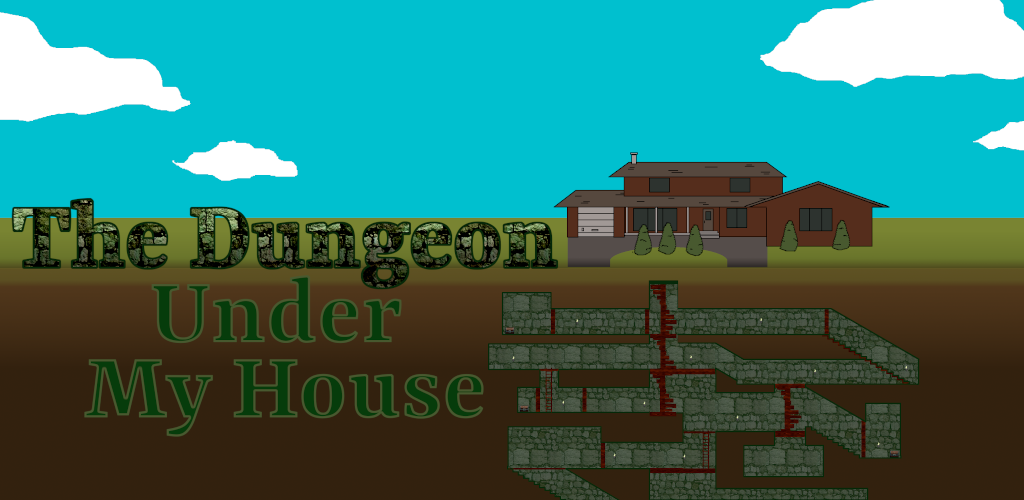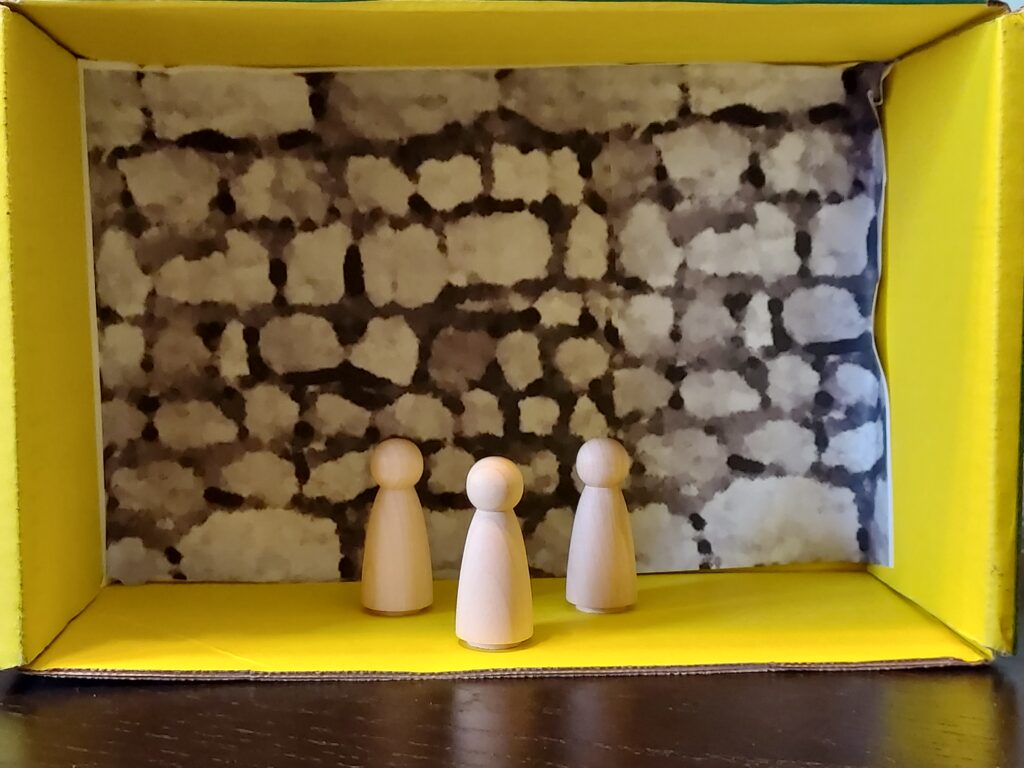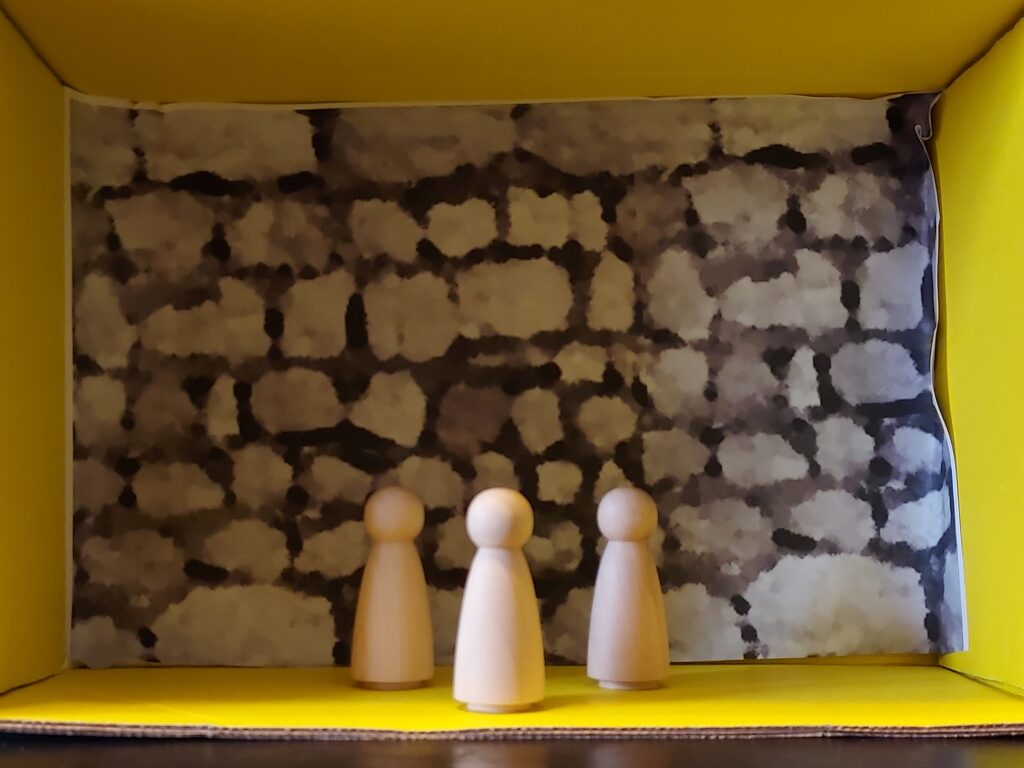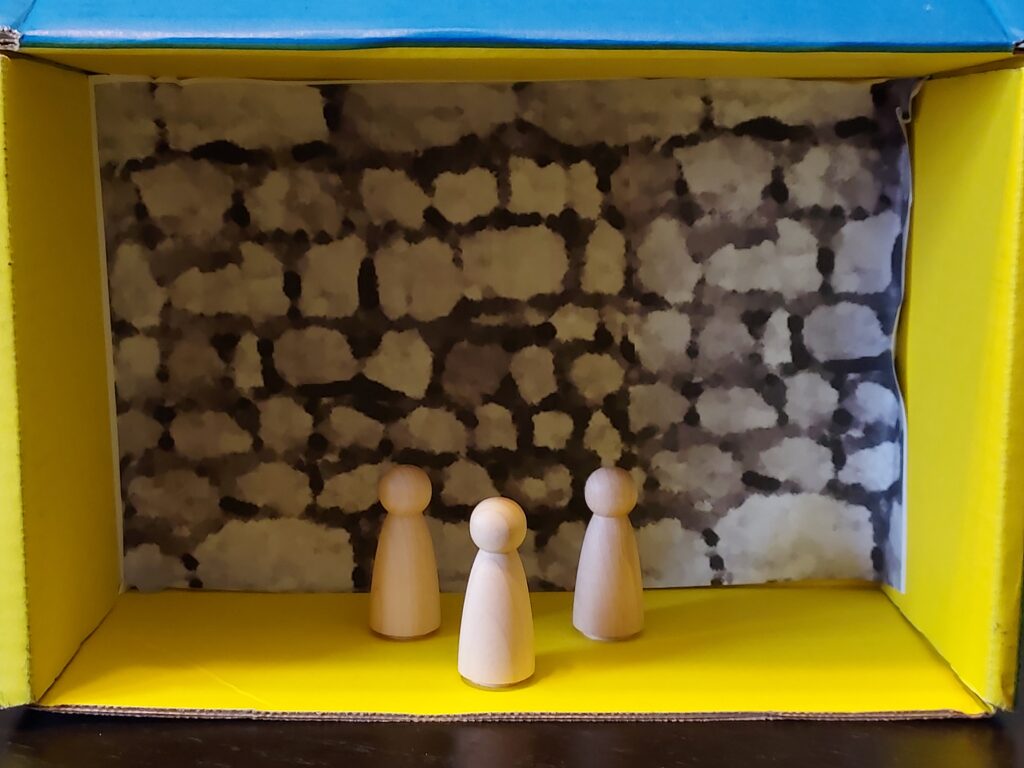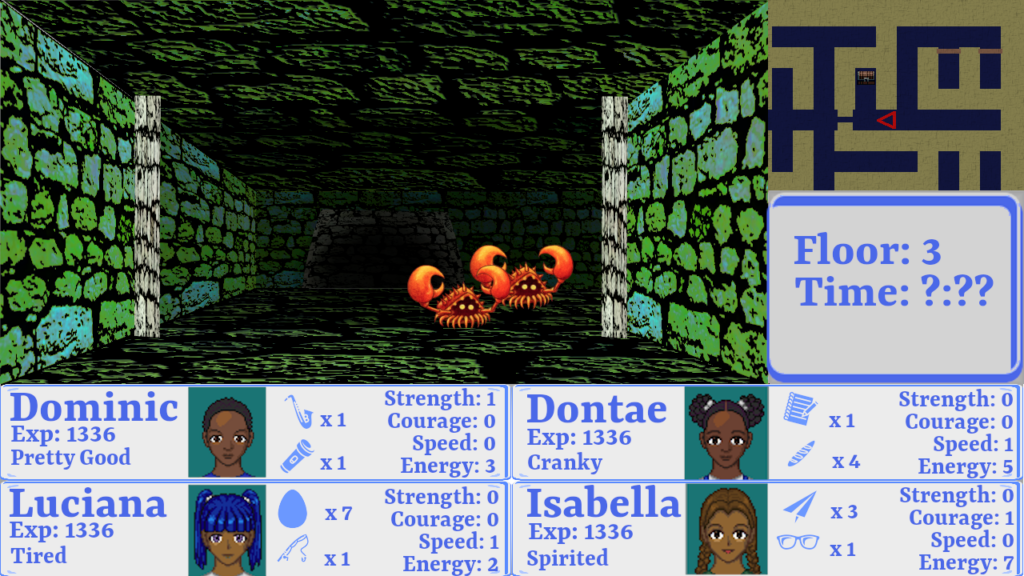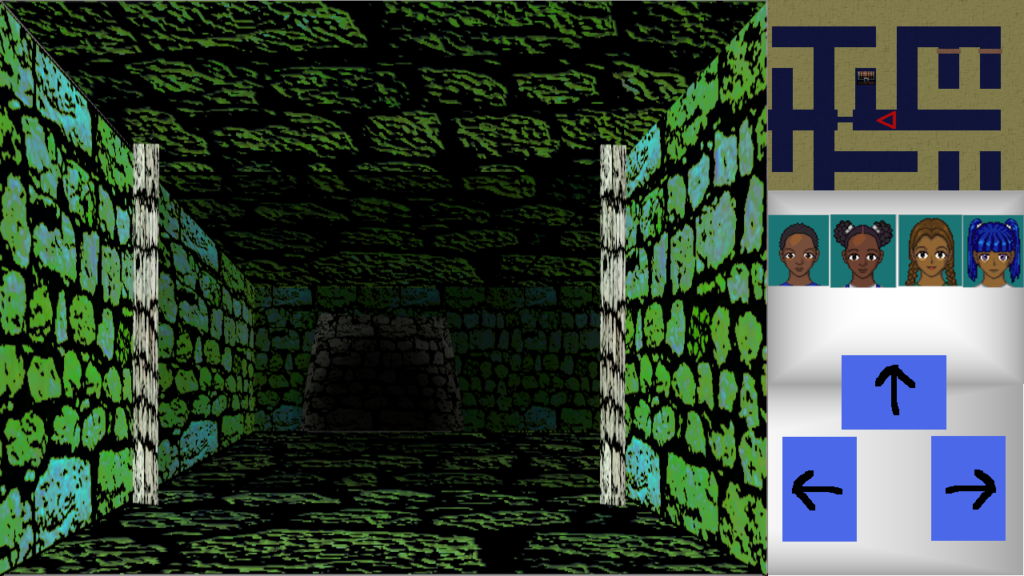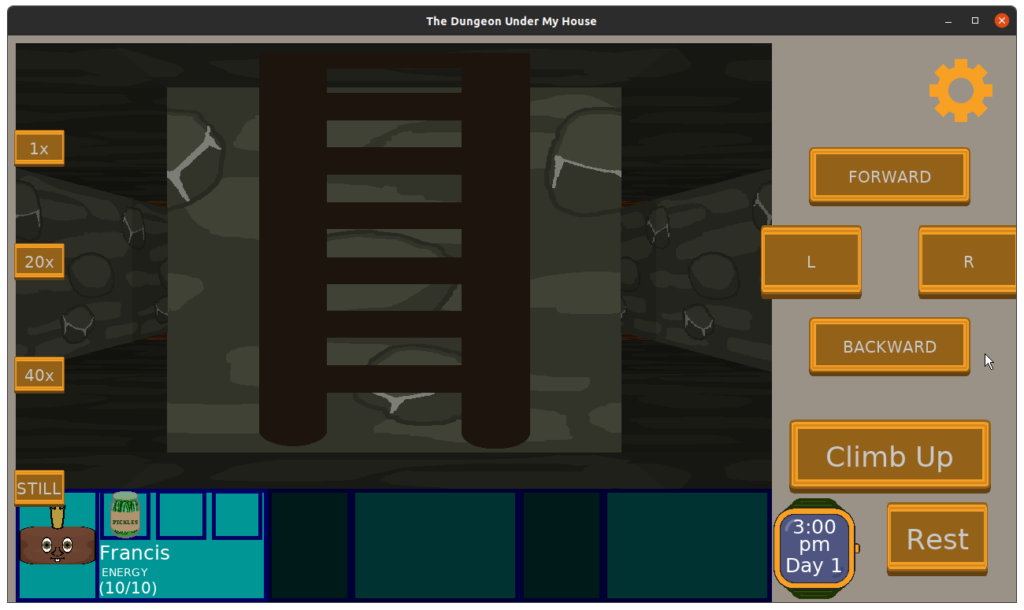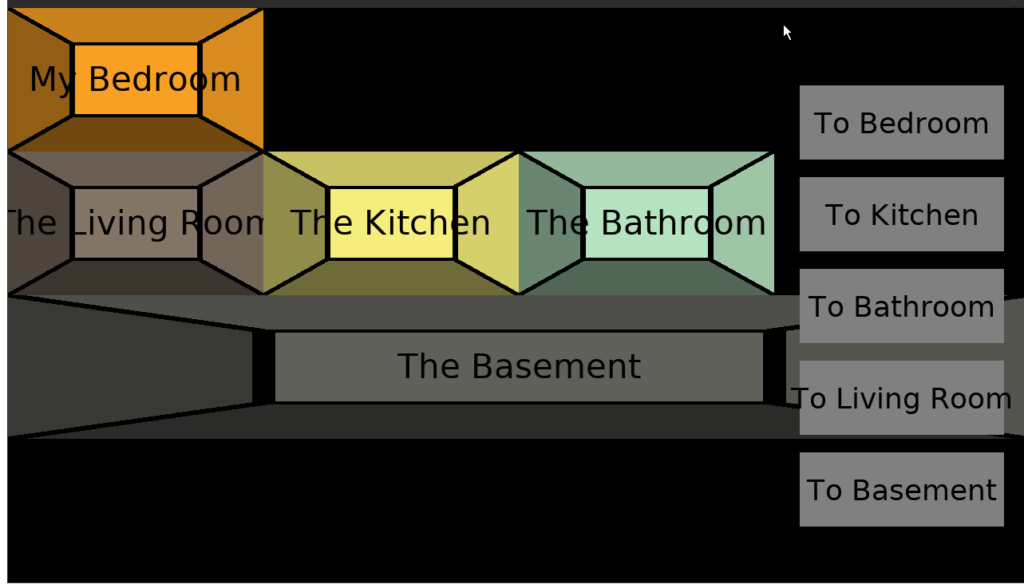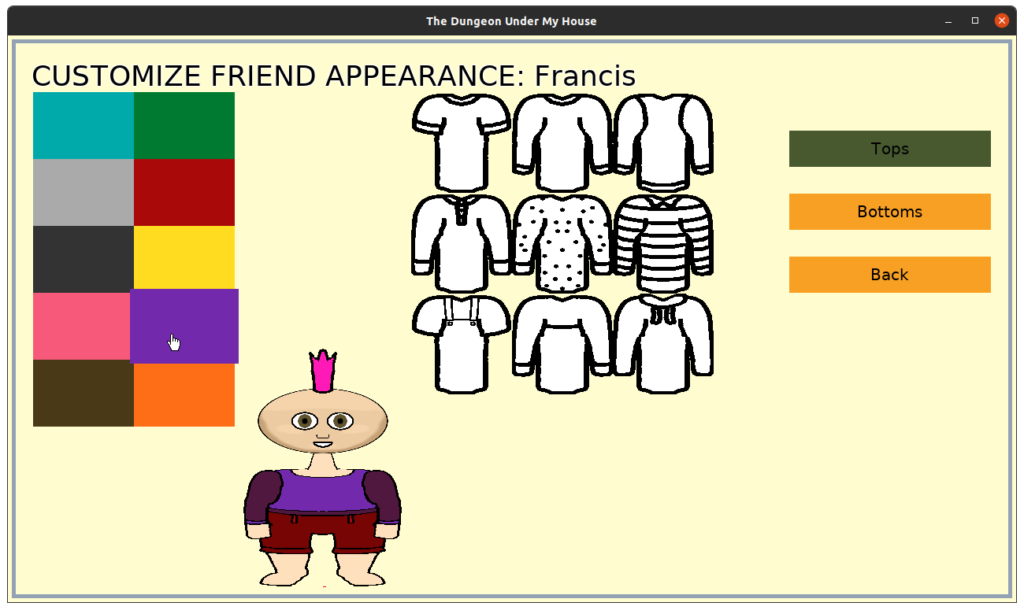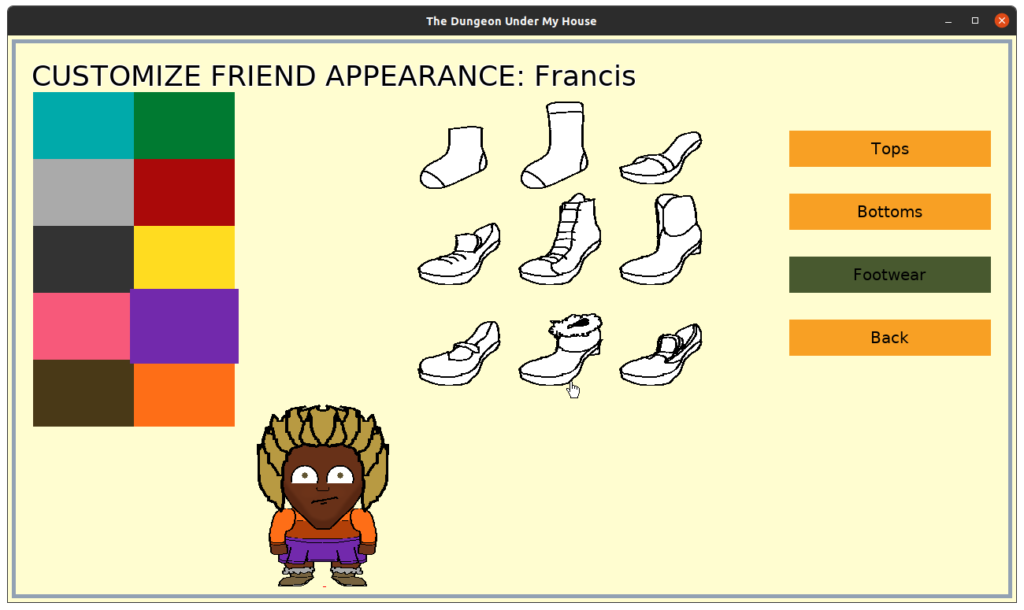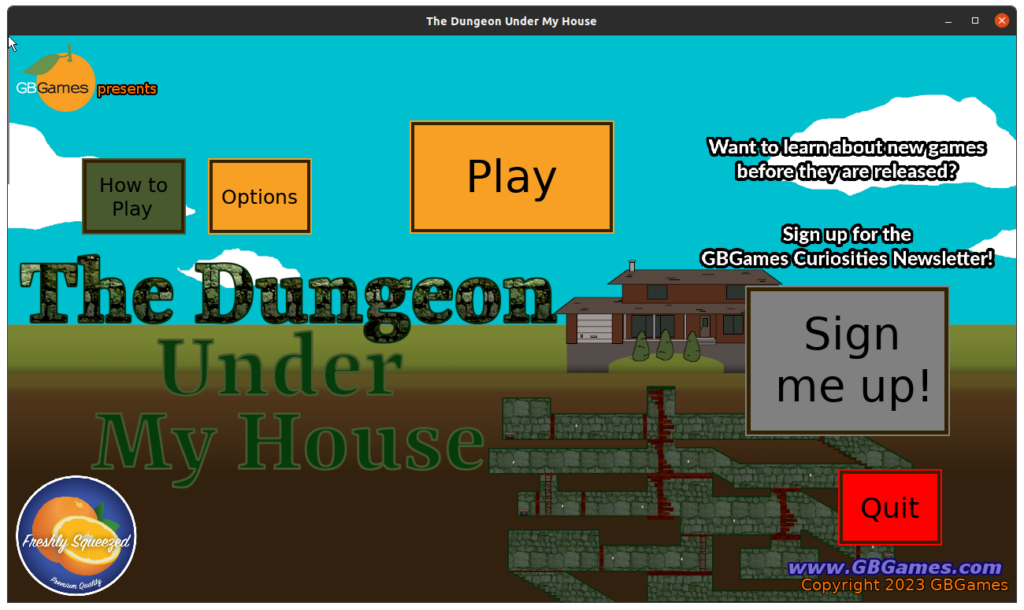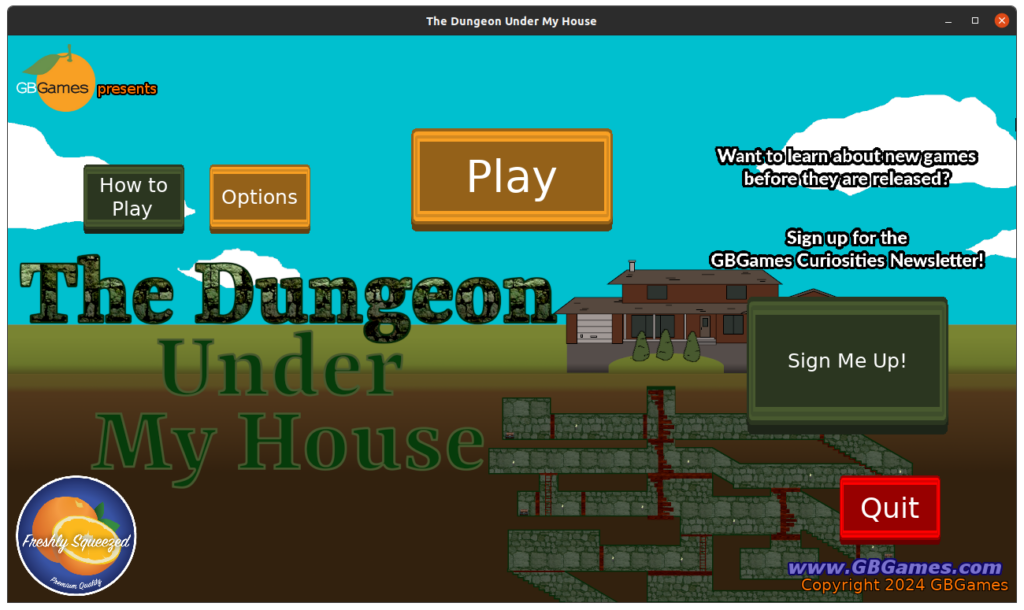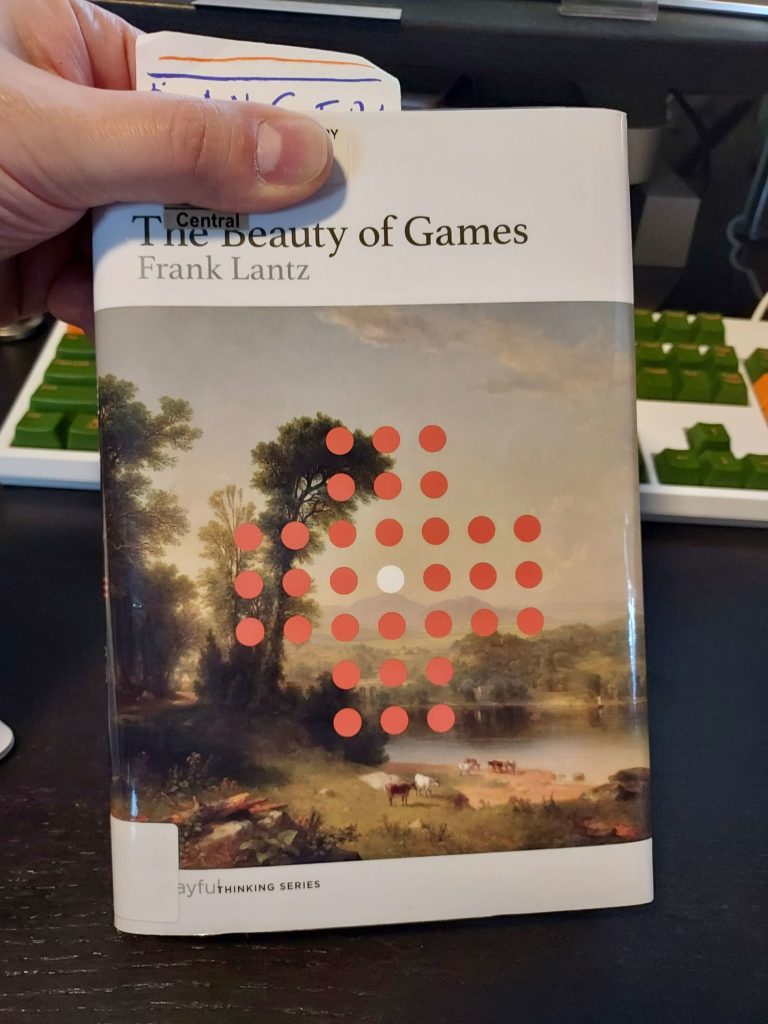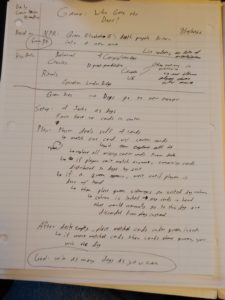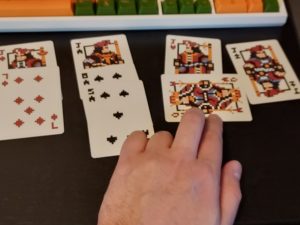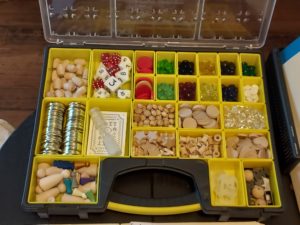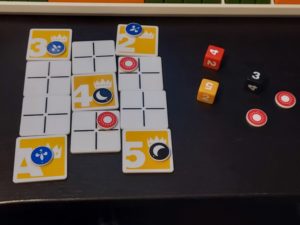At the start of the year, I like to look back on the previous year to see how well reality matched up with my plans, and then, trying to incorporate any lessons and insights I’ve gained, I make new plans for the coming year.
In the past, I’ve found myself weeks (or even months?) into the new year before I get around to this work. I was not exactly hitting the ground running, partly because I was still finishing the previous year’s efforts up until the end of the year and didn’t give myself time to reflect before the new year.
But this time around, I took off the month of December from my day job with the intention of journaling, reviewing the past, and figuring out what I want out of the future. December tends to be my least productive month in terms of GBGames, and while there were still plenty of errands and holiday preparations to work on, I did manage to make some time for some serious thinking effort, especially thanks to an early Christmas present from my wife for a week-long solo retreat.
The short version: 2022 kinda sucked. I’m looking forward to making 2023 into what 2022 should have been.
Here’s the long version.
In A Review of My 2021, and Looking at 2022, Already In Progress, I was coming off of the success of finally publishing Toy Factory Fixer, my first one-month Freshly Squeezed Entertainment project, after about 12 months of development.
I had a goal of releasing 6 such games over the course of a year, and so I was recognizing that my capacity as a very, very part-time indie meant that I needed to be a LOT more realistic about what I could actually accomplish.
My overall strategy didn’t change, but the values were significantly smaller. My goals for 2022 were:
- Release at least 2 Freshly Squeezed Entertainment games by December 31st
- Increase my newsletter audience from 22 to at least 34 subscribers by December 31st
- Earn at least 1 sale per month by December 31st
Maybe publishing 2 games was still too ambitious, but I figured at least one game with one in development was still an improvement. And maybe 1 sale per month sounds laughable, but I didn’t come anywhere close to 1 sale per week OR per month in the previous year. And if it is so laughable, it should be easy to get more than one sale a month even if all I do is post a plea on Facebook asking friends and family to buy the game.
I right-sized my goals for what I thought was simultaneously a small step and also a stretch from what I have so far been demonstrating.
So how did I do?
Not great, actually.
Published Freshly Squeezed Entertainment Games (Target: 2) — 0 (or maybe 1)
I’ll explain more below, but other than working on porting my existing games to the desktop and creating Disaster City, my Ludum Dare 50 game, in a weekend, I made no new games.
I don’t really count my Ludum Dare game, though, because it was conceived and developed for the compo and wasn’t really something I was planning to make into my next Freshly Squeezed Entertainment game. I thought about making it a full-fledged project after the compo, but I never got the energy behind it to do so, even though I liked the germ of the idea I had created. I wanted to be more deliberate than “Here’s a game I quickly threw together, so maybe I can make a bigger version of it?”
At the end of the year, I started putting together a design document for my next Freshly Squeezed Entertainment, but it isn’t ready enough yet for me to formally announce its existence yet.
I might be too hard on myself, as I did put in time and effort to create ports, so it wasn’t a complete blank of a year, but it is my most clear-cut failure for a major goal to not get addressed at all.
GBGames Curiosities Newsletter subscribers net increase (Target: 12) — 3
On the bright side, it’s above 0. I should be pleased about that fact at least. And no one unsubscribed, at least.
My newsletter grew by 6 subscribers the previous year, though, so I’m not happy with gaining fewer subscribers, especially since I have Toy Factory Fixer and Toytles: Leaf Raking released on the desktop and so had more exposure with more incentive (you can get a free player’s guide for each game) to join the newsletter.
I don’t know if I should take it as a refutation of my strategy to release free games and grow my audience through them, or if it is still too soon to tell.
Sales (Target: 12) — 3
I sold 7 copies of Toytles: Leaf Raking in 2020, 5 copies in 2021, and only 2 in 2022, with one person giving me an optional couple of bucks for my otherwise free Toy Factory Fixer to make for what I technically call a third sale.
I don’t like this downward trend, either.
On the other hand, due to one of the two sales happening on itch.io which allowed for one customer paying me significantly more than the asking price (thanks, Mike!), I actually made almost $1 more than the year before, and making more money is a trend that I like.
But obviously I can’t rely on such generosity for everything.
Analysis
My major goals are above, but I also had minor goals to port my existing games to the desktop, especially after Ludum Dare 50 and my efforts to port my game for it to get as many potential reviewers as possible.
But before all of that, there were two big tasks.
One was to finish some post-release efforts for Toy Factory Fixer, such as creating and uploading a player’s guide and updating my website for it.
Another was a presentation I meant to give early in the year that never happened. I was scheduled to give a Toy Factory Fixer post-mortem presentation at my local IGDA chapter in February, but that month the meeting never happened, and the chapter hasn’t scheduled another one since.
At the time, I thought it meant I had more time to polish my presentation before it was rescheduled, but I didn’t really track the time I worked on it, so I don’t know how much effort it took.
My vague plan was to finish the presentation, then switch gears to quickly port my games, then switch gears again to creating my next Freshly Squeezed Entertainment game. Basically, my major goals were on hold, and maybe they shouldn’t have been considered my major goals if that were the case?
I worked on my presentation on and off for a few months, finishing it in May, but then never actually presenting it or recording it myself, completely wasting the effort for this supposed priority.
After Ludum Dare in April, I finally put together a backlog of tasks to port my games, only to kick myself for having put off for so long the 5 minutes it took to do it.
What followed was a few months of development effort to do the ports. Frankly, getting the games onto the desktop was easy work, and while I spent weeks creating the Linux port despite the fact that my main development system is Linux-based, it was because I wanted to make it a one-button, reproducible build. The Windows port was fairly straightforward as well and was almost a one-button build that needed a few tweaks. The Mac port was a little troublesome, but I eventually figured out the arcane incantation Xcode required.
In August, I participated in 60 FPS Fest again, and it was insightful watching complete strangers try to play Toy Factory Fixer. A number of people struggled to figure out how to start, which I addressed through some hints and UI changes in an update I made in the following weeks.
And then, after my Toytles: Leaf Raking desktop ports were announced, for some reason, I did nothing.
Well, that’s not quite true. In September I tried an experiment in which I did a daily game design exercise based on the day’s news headlines, and while I enjoyed the experience and think I got a lot out of it, it required too much of my time, way more than I could justify spending on it.
But I didn’t have a product plan. At the very least, I didn’t have a next project ready to go, and apparently my theme for this year was to struggle with overcoming inertia.
I also had some health problems which impacted my ability to sit long enough to work on anything.
So basically, my major goals took a backseat until I could get what at the time looked like quick goals accomplished, which ended up either taking me longer to get around to or taking me longer to finish than I originally anticipated.
But it wasn’t like I vastly underestimated how much work there was to do. I think it came down to not getting myself to do the work consistently.
In 2021, I had habits that got me to slowly but surely publish a game. I did exercise every day. I dedicated regular time to learning, mostly to take advantage of my Pluralsight subscription.
I had set my course, and each day I executed part of a plan that moved me in that direction until I was at my destination.
But this past year? I found myself between plans often. It’s one thing to take a step forward with an existing project. It’s another to figure out what a new project should be.
I think I usually find that I need a major break after a game project is completed, but I felt like I couldn’t get back into the swing of things this past year, and I still can’t quite put my finger on why.
I was fine so long as I was tracking some effort, but for some reason if I wasn’t dedicating time to development or writing or learning, I found it harder to keep on task, or start a task in the first place, even if I knew what that task was. In fact, whenever I don’t know what I should be doing, I take that as a clue that what I should be doing is figuring out what I should be doing. Yet, I couldn’t muster up the effort.
Was it burnout? Was I questioning why I was trying to accomplish things I set out to do so long ago that I forgot why I was doing them? Was it frustration that the rest of society seems to be trying to get back to a pre-pandemic normal that doesn’t and shouldn’t exist anymore? I don’t know.
But as someone who aspires to one day get back to full-time indie status, this past year felt squandered and lost despite the accomplishments I can point to.
What else?
Compared to the previous year, I only put in a third as much game development, a total of 101 game development hours. I only had five months that were productive, and they weren’t full months.
I blogged a lot less, with only 35 published posts compared to last year’s 60. About 9 of the posts were for Ludum Dare 50 weekend, and I don’t think I tracked my writing time then. Since many of my posts are sprint reports, and I was doing less development, it makes sense that I had less to say, but there are other kinds of blog posts that I could have written. I put in about 53 hours for writing that I tracked which is surprisingly only a little less than the time I put in the year before and which doesn’t include when I wrote for the player guides. My newsletter is supposed to be a monthly one, but I only sent out 4 issues last year, mainly because the only things I had to announce were the ports and updates to existing apps.
I had managed to keep my expenses down significantly relative to previous years, mainly by resisting game and book sales (I have plenty already purchased I could play/read instead), but it was still a bit more than I had planned and a large multiple of my income.
My personal goals were:
- Do a minimum number of walking hours, push-ups, squats, and planking
- Read a book per week
- Create at least one doodle per day
- Do 15 minutes of focused learning a day
I wasn’t able to keep up with my 15 push-ups, 15 squats, and 30 seconds of planks, mainly because I hurt myself bad enough that I had to stop, only doing the exercises for about half of the year.
I continued to do my exercise and stretches more or less as I have always done it, which has kept my back strong and meant that I haven’t needed to see a doctor about it in a couple of years. Unfortunately, at some point I had a severe pain that was quite debilitating, and I couldn’t pinpoint exactly what might have caused it other than helping someone move a mattress or twisting under a bathroom sink trying to fix a leak.
People tell me that part of the fun of getting old is getting hurt for no reason, and I don’t like it.
So unfortunately I spent a chunk of my summer recovering and doing physical therapy. For some time it was not my favorite thing to stand, sit, or lie down. The latter two were especially tough because getting up would send my back into painful spasms, and working in my office for longer than I needed to for the day job was not happening much. The physical therapy helped, and these days I feel a lot more confident and way less self-aware of everyday movement.
Even when I was feeling well enough to exercise, I wasn’t doing cardio, something I keep saying I’ll prioritize but never make happen, but we just got a new treadmill and I’ve started walking on it daily, and when the weather is nicer I might start making a point of going out for a walk instead. I want to eventually build up to running and perhaps look into actually joining a recreational soccer team. I miss playing the game, and I loved helping to coach my daughter’s awesomely inclusive soccer team in the previous year.
I read a total of 28 books last year, none of which were related to game development. Whoops. That’s usually something I try to prioritize. One book was “I Have No Mouth and I Must Scream” by Harlan Ellison, which I read because I was playing the game around May, so does that count?
Only 4 of the books were fiction, including Ellison’s. One book was about advertising, another was about product management, and the rest were either about history, computer science, business, self-improvement, and a few other topics. My favorites for the year include The Profiteers by Sally Denton, You Look Like a Thing and I Love You by Janelle Shane, Between the World and Me by Ta-Nehisi Coates, Work by James Suzman, and Humankind: A Hopeful History by Rutger Bregman.
Compared to the previous year’s 137.75 hours, I only tracked 22.5 hours of dedicated learning. I was trying to keep a daily streak going, which normally is fine since that’s the point of a daily habit, but it was stressing me out to do so. The problem was that I was also aware that I was making enough time for learning but not enough for doing. Why was I stressing myself out to do one but not the other? So I dropped the habit after a few months, intending to pick it back up when I was ready.
In fact, at some point I wondered if it made sense to carry over my daily habits from the year before, especially as I kept finding new ones I wanted to add and wondered what to cut. I don’t have infinite time, and while I find a number of things valuable, I needed to prioritize. It didn’t help when I found myself stressed about trying to keep on top of some of them, such as my daily doodle, daily learning, and daily Duolingo Italian lessons, so I dropped a few of them early in the year.
I found it incredibly helpful trying to stop self-inflicted stress from happening. Much as how in the previous year I didn’t need to stress about an arbitrary game publishing deadline I created for myself, I found myself questioning why I was staying up late to catch up on missed doodles that week or finding myself annoyed that a meeting I was in meant I couldn’t finish a Pluralsight module that day. I instead was trying to live by the philosophy of “do more of what makes you happy” although I did find a lot of relief just removing things from my life rather than adding to it. Pluralsight isn’t cheap, so I have some incentive to actually make use of it, which is what my daily habit was helping me to do, but I need to find a more sustainable way to do it.
Last year I said I wanted to make more time to actually play games, something I usually don’t do because if I have time to play then I have time to do development. I wanted to be more deliberate and regular about playing games, though, because there are obvious benefits of learning from existing games but also because when I do play games I tend to play them obsessively for days or weeks, pushing out other things I need to do. Unfortunately I never did figure out a regular game playing schedule, and so I once again had spikes of play between many long lulls throughout the year.
There was more going on that I won’t recount here, both in terms of challenges at the day job and family health issues and a major death, but suffice it to say that it was a difficult year to feel motivated and inspired.
I think the theme last year was questioning whether or not the path my past self had set me on was still serving me, and in the absence of finding a new path, I stopped traversing it to give myself time and space to eventually figure out where I wanted to go next. Apparently I needed a lot more time and space than I expected.
I also found myself struggling with the fact that I was still a very, very part-time indie, that the day job takes up such a large chunk of my waking hours that I would love to put towards a variety of other activities, so I feel like I have to prioritize what’s left over, and I’m unsatisfied with this situation.
Goals for 2023
My goals for last year were not supposed to be overly challenging. I figured that all I had to do was make a concentrated effort to easily meet them. All I had to do was convince one person to buy a game in any given month. I should similarly be able to get one person interested enough to subscribe to my newsletter each month. If I could do it, I imagined that the next customers wouldn’t be far behind.
Maybe the hardest goal would be publishing two games in a year, but I imagined that it would have come down to project management, prioritization, and limiting scope. So, doable.
I normally would right-size my goals based on the previous year’s results, but I think last year was an off-year for me. I think those goals are still doable despite the fact that I didn’t get them done.
So, I’m keeping them as my goals for 2023:
- Release at least 2 Freshly Squeezed Entertainment games by December 31st
- Increase my newsletter audience from 25 to at least 37 subscribers by December 31st
- Earn at least 1 sale per month by December 31st
That’s at least one new subscriber and at least one new sale each month, and I’ll need to focus on shipping as quickly as possible to get two games out.
My current strategy is that my free games will drive newsletter subscribers who eventually become paying customers, but I of course also have to deal with the fact that my games are quite obscure and off the radar of almost all potential players.
One major focus will be on actual creation and development, things I’ve done before and understand. I have demonstrated that I can design, plan, create, and publish a game, and I just need to put in the hours.
But another major focus will be solving my obscurity problem, to figure out how to get my games in front of more people, something I have long recognized as a problem but have yet to put in a similar amount of effort to solve. While I believe the kind of games I make aren’t meant for the kinds of players found on Steam (and so most typical and accessible indie game marketing literature is irrelevant), I don’t have a solid idea of just who my target players are, and I haven’t defined them for years despite recognizing this need.
I need to actually answer these questions rather than merely ask them like I do each time I think about marketing and sales: Where do they live? How do they spend their time? How specifically do I let them know about my game when they are looking for new games?
But not in a creepy, data-harvesting, privacy-violating kind of way. Just in a “you are clearly looking for the kind of family-friendly, privacy-respecting entertainment that I provide” kind of way.
My goal isn’t to try to make a random hit game. My goal is to grow an audience who cares about what I make. I’ve done a poor job of finding such an audience all these years, and so my work in the coming months is to figure out how.
Outside of my major goals, there are a few other areas of my life I focus on.
I want to make my physical health a bigger priority. For years, I’ve been doing just enough to keep my body flexible and capable. My morning exercise and stretching routine takes mere minutes, and while I do get benefits from it, I’m not satisfied. This past year showed me that just enough isn’t enough, that my body needs to be more capable of handling day to day life as well as the occasional heavy duty chore. I need to move more and challenge myself physically, while also not overdoing it and hurting myself.
I have been fairly happy with investing time and money into learning. Whether it is my daily habit of reading in the morning, paying for books and courses, or going to conferences, I don’t see changing much. For years, my goal has been to read a book per week, but when I stopped listening to audiobooks in my car in favor of listening to podcasts, my total book count dropped. And working from home, I don’t drive as much anyway, but if I take up daily walking or running, I could watch presentations on a TV or listen to audiobooks or podcasts more while also getting the mental benefits that come from cardio. I recently acquired a number of books on game design, plus I have a number of ebooks I never make time for, so I have plenty of content. It’s just a matter of prioritizing quality reading as opposed to allowing myself to jump into social media multiple times a day.
And I want to make sure I give myself time to play. Not just games, although getting back into hosting a monthly board game night or enjoying the occasional computer game in my collection would be good, but I want to give myself permission to not need to be accomplishing or completing or checking-off something. I want to do something for the sake of doing, for exploring, for wondering, and not worrying that I’m supposed to be doing something else to be productive. I want to get some quality work done, but I also want to enjoy the process more.
I hope you have a safe, healthy, curious, and playful 2023! Happy New Year!

